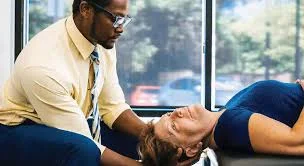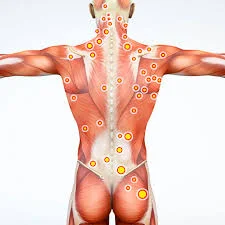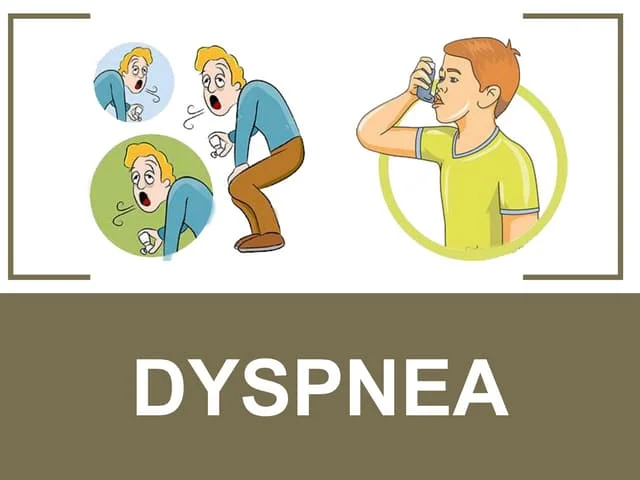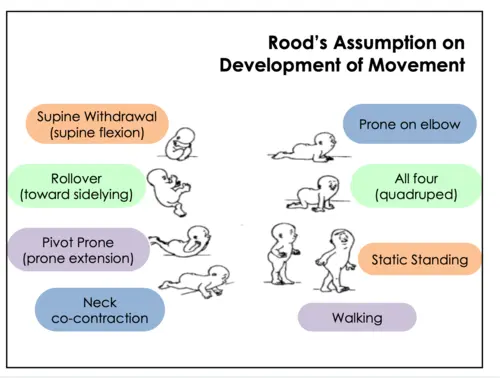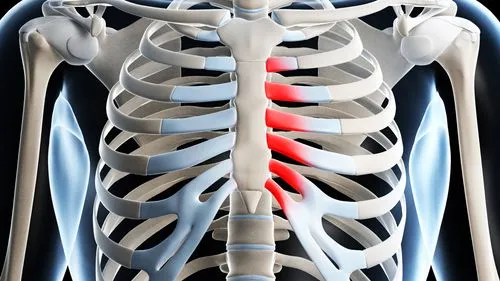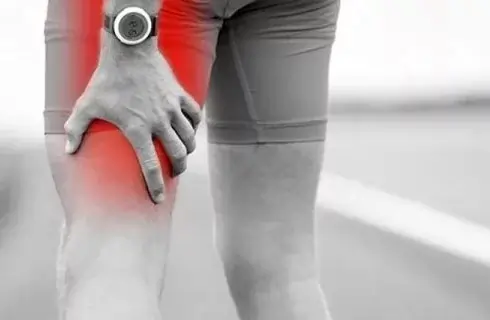Vestibular Rehabilitation
Vestibular Rehabilitation: What is it?
Vestibular rehabilitation is a specialized form of physical therapy aimed at reducing dizziness, vertigo, and balance problems caused by inner ear disorders. It involves exercises designed to improve gaze stability, balance, and overall coordination by retraining the brain to adapt to signals from the vestibular system. This therapy is commonly used for conditions like vestibular neuritis, BPPV, and Meniere’s disease.
Who needs Vestibular Rehabilitation?
Some medical disorders that also impair your sense of balance might cause dizziness. Headache and muscular weariness can also result from dizziness and balance problems. People with the following diseases may benefit from vestibular rehabilitation therapy:
- Vertigo.
- Ménière’s disease.
- Benign paroxysmal positional vertigo (BPPV).
- Labyrinthitis.
- Vestibular neuritis.
- Migraine headache.
- Stroke.
- Traumatic brain injury (TBI).
- Falling risk.
What is the Process of Vestibular Rehabilitation Therapy?
Balance and dizziness go hand in hand. Vestibular rehabilitation treatment aids in the management of imbalance and other symptoms of vertigo. Knowing more about the causes of your dizziness and how your body maintains equilibrium may help you better comprehend how treatment operates.
Dizziness
When anything interferes with your sense of spatial direction, dizziness occurs. Your brain determines your body’s location in respect to your environment, which is known as spatial orientation. As a result, you can have dizziness or lightheadedness. Additionally, you can feel shaky, as though your sense of equilibrium has been gone.
Balance
The interaction between your sensory system and central nervous system (brain) determines how balanced you feel. Among the components of your sensory system are:
Your inner ear’s vestibular labyrinth: This includes your otolith organs, which respond to movement and gravity, and your semicircular canals (loops), which respond when you tilt your head.
Your vision: The signals your eyes transmit to your brain indicate your body’s position concerning other objects.
Your muscles, joints, and skin are under pressure as your body moves. Your brain receives messages from your tissues that inform it where you are regarding space. Leaning back while standing, for instance, puts pressure on the tissues in your lower thigh and the rear of your foot. Your brain is informed that you are bending rather than standing erect by that pressure.
This information is produced by your central nervous system, which then instructs your body on how to stay balanced. Your central nervous system is unable to properly process information when there is an interference with the system’s connection. Vestibular rehabilitation therapy aids in re-establishing those connections, which eventually lessens your imbalance and vertigo symptoms.
Aims of exercises:
- To practise eye movement without the use of the head.
- To work on balance in normal circumstances while paying particular focus to improving muscle sensory awareness and eye utilisation.
- To practise head motions that make you feel lightheaded.
- To become used to moving about in the dark and in the daylight in a natural way.
- In general, to promote the restoration of self-assurance in performing simple, unhurried, and spontaneous motions.
When you start:
When performing the exercise for the first few times, you should have someone else with you in case the dizziness gets too bad.
When should you discontinue the exercise?
It is recommended that you perform these exercises three times a day for at least six to twelve weeks, or until the dizziness completely disappears. Stopping before the dizziness has completely subsided frequently causes symptoms to return. When there is no more dizziness for two weeks in a row, the exercises are stopped. If dizziness recurs, the exercise can be stopped and resumed at any moment.
You should do the following exercises twice a day. The exercises are meant to test your ability to balance, and they frequently make you feel lightheaded. This is a typical reaction to these mentally taxing activities. If at all feasible, you should attempt to resolve these symptoms. Have your nurse ask an inpatient physical therapist for help if you don’t think you can.
Methods:
- Work your way up to 20 repetitions of each movement.
- Every workout begins with a disproportionately sluggish start and progressively picks up speed to a faster pace.
- Make careful to keep exercising even if you start feeling lightheaded. Only if you start feeling queasy or nauseous should you stop and take a break. Try a new activity after resting if you’re feeling sick. Put off doing further work until your next session if you continue to feel nauseous.
- Head Exercises
Bending:
While seated, tilt your head down to look at the floor and then up to look at the ceiling.
Keep your eyes on the ceiling and the floor as you move your head.
Do this ten times. Wait for the symptoms to subside, which should take around 30 seconds.
Do the entire procedure twice more.
Turning (side to side):
Turn your head to the right and then left while seated, using your eyes to guide your head as though you were watching a game of tennis.
Turn your head quickly enough to cause symptoms, but not so quickly that you put excessive strain on your neck. (First, slowly, then rapidly.)
After 10 back-and-forth cycles, wait 30 seconds (or until symptoms subside.
Do the entire procedure twice more.
When the lightheadedness subsides:
- Close your eyes and perform head exercises.
- Make the transition to standing while doing head exercises.
The difficulty increases with the distance between your feet.
- Sitting
Shrug shoulders- 20 times.
20 times, turn your shoulders to the right and then to the left.
Turn your head, shoulders, and trunk twenty times individually.
With your eyes open, rotate your upper body from right to left. Then, close your eyes and repeat.
With your eyes open, rotate your upper body from left to right. Then, close your eyes and repeat.
Bend forward, touch the ground, and then sit back up. 20 times, keep your gaze fixed on the wall.
Bend forward and touch the ground before sitting up. 20 times, move your gaze to the floor and back.
Eye movements (head is still):
Up and down (focusing on finger).
Side to side (focusing on finger).
Finger to nose tip and out (finger concentration).
- Standing
Transition from a seated position to a standing one and vice versa
20 times with eyes open.
Repeat with your eyes closed.
Standing on one foot in front of the other.
Stand “heel to toe” in a corner for 30 seconds, one foot in front of the other, with the heel of one foot contacting the toe of the other. Keep your eyes open. The objective is to remain upright without making contact with the wall for the full thirty seconds. You may make this more difficult by crossing your arms over your chest. Try standing “almost heel to toe” (with feet touching at big toes and ankles) if this is too difficult at first. Practise with your eyes closed once you’ve mastered these with your eyes open.
Standing on the cushion
Stand on a couch cushion or a few cushions in a corner. For 30 seconds, try to remain still without making contact with the wall. Keep your eyes alert when you practice. Practice with your eyes closed; once this is simple. You might put your feet closer together to make this more difficult. This becomes even more difficult when you cross your arm over your chest. By doing this in the most difficult position you can, you should advance.
Standing and throwing
A little rubber ball should be thrown from hand to hand above eye level.
Under one knee, toss the ball from hand to hand.
Stand with your heels together.
Hold your equilibrium and look directly ahead (only try with help).
Standing on one foot.
Try only with help. Perform with your eyes open first, then closed.
Miscellaneous
Engage in bending, stretching, stooping, and climbing and descending stairs (but only with help).
- Walking
Walking in a straight line
For five minutes, practise walking in a straight line with one foot in front of the other or ‘heel to toe’ (the heel of one foot contacting the toe of the other foot) in a corridor or next to a wall. Try walking “almost heel to toe” at first if this is too difficult, and then work your way up to touching your toes.
Head twisting along with walking
Practice walking in a straight path while moving your head and eyes to the left and right with each step in a corridor or other open area. This means that when you step with your left foot, you look left, and when you step with your right foot, you look right. Proceed for around 20 feet or the whole length of the corridor. Do this three times. Repeat the whole procedure three more times, focusing on the floor or ceiling. Between repetitions, you must take a break to allow your symptoms to subside.
Move across the room.
Perform with your eyes open at first, then closed (only try with help).
Lying Down
Lean down to your left side while sitting on the side of the bed, swinging your feet onto the bed as you do so.
Wait 30 seconds or until the symptoms subside.
Do this three times.
Repeat three times to the right now.
- Eye Exercises – Gaze Stabilization Tips
While the head is moving, the target must stay in focus and not become blurred or look motionless.
Make slight head movements (45 degrees on each side) while performing the exercise.
As long as the target stays in focus, the head motion speed should be raised.
When doing workouts, wear your glasses if you wear them.
These workouts may cause nausea or vertigo. Make an effort to manage these symptoms.
Take a break in between each workout.
Exercise requires complete focus. Avoid distractions.
Standing exercises should be done with someone nearby or next to a counter for safety.
Gaze Stabilization
Maintain your focus on a single, stationary target that is three to ten feet distant and held in your hand or on a wall. Now, move your head back and forth for 30 seconds. Do this three times. Now, move your head up and down for 30 seconds and repeat three times. Perform three sessions per day. This can be advanced by starting in a seated posture and progressing to standing on form, marching in heel-to-toe, standing with feet apart, or standing with feet together. Additionally, if the thing you are concentrating on is shown on a chequerboard or “busy wallpaper,” this will be more challenging.
Smooth pursuit
Maintain eye contact while holding a single target. While keeping your head motionless, slowly move it from side to side for 30 seconds. Sit down and perform. As tolerated, advance to the standing posture. Repeat the head-up-down motion now. , repeats in each direction. Perform three sessions per day.
Head and eyes in the same direction
Maintain eye focus by holding a single target, such as a pencil or playing card. For 30 seconds, move the target, head, and eyes slowly in the same direction (up and down, side to side). As you get better, you can move from a sitting position to a standing one. Do this three times in a session. Having a busy wallpaper as your “background” will make this more challenging. Perform three sessions per day.
Head and eyes opposite direction
Holding the target, move your head in the opposite direction of the target for 30 seconds while keeping your eyes fixed on it. You may then move the target slowly up and down or side to side. Do this three times in a session. As in the last exercise, you can advance from sitting to standing. Perform three sessions per day.
Until your symptoms go away, keep doing these exercises at least twice a day. You don’t have to keep doing these exercises if you don’t experience any symptoms.
Start a home walking program. Five days a week, you should go for a stroll. Take a five-minute stroll to start. Until you can walk for 30 minutes straight, extend your walking duration by 5 minutes per week.
- Brandt-Daroff exercises
Some BPPV instances are best treated using Brandt-Daroff exercises since they don’t react well to CRPs. If CRPs are not appropriate, these exercises could also be suggested.
BPPV can be treated using Brandt-Daroff exercises, which can be done at home without a specialist’s supervision. The precise mechanism of action of these workouts is unknown. The crystals may be moved back to their proper location inside the inner ear by the repetitive head motions (as with CRPs).
Alternatively, your brain may learn to lessen its sensitivity to the signals it receives from your ears (vestibular compensation) as a result of frequent exposure to motions that cause dizzy feelings.
- Turn your head 45 degrees to one side while sitting on the edge of the bed.
- To make the back of your head behind your ear contact the bed, quickly lie down on your opposite side (to the left if you rotated your head to the right, and vice versa).
- Hold this posture for 30 seconds or until the lightheadedness subsides.
- Go back to sitting.
- On the opposite side, repeat steps 1-4.
Until you get six repetitions on each side, you should repeat these procedures three times. You should perform the exercises two to three times a day for two weeks unless your physiotherapist or expert advises you to do differently.
You may have vertigo while performing these exercises, but it’s crucial to keep going if you want to see any results.
What takes place before beginning vestibular rehabilitation treatment?
Your symptoms will need to be assessed. An audiologist can perform a battery of vestibular tests on you. The vestibular component of your inner ear is assessed using these several tests. A physical therapist will assess your flexibility, arm and leg strength, gait (the way you walk), and balance.
What takes place in therapy?
Dizziness and balance problems can have diverse effects on you. Vestibular rehabilitation therapy will be customised by your healthcare professional to meet your unique needs. They will demonstrate how to perform particular exercises so you may work out whenever it’s convenient for you at home. These activities may be part of therapy:
- Eye movement control.
- Balance retraining.
- Stretching and strengthening.
What is the average duration of a vestibular rehabilitation program?
That is contingent upon your circumstances. Your response to therapy and the cause of your dizziness or balance problems will determine how much therapy you require. The average person attends six to eight sessions each week. Some individuals could require just one or two sessions. Others may require continuous therapy, including independent exercise, for several months.
What benefits can vestibular rehabilitation therapy offer?
According to studies, vestibular rehabilitation treatment is beneficial:
- Reduce your risk of falling.
- Improve your balance.
- Reduce your dizziness symptoms.
- Improve your ability to stabilize your vision.
- Increase your body strength.
Does this treatment have any risks?
There are no health hazards associated with vestibular rehabilitation treatment. It’s always possible that therapy won’t fix your balance or vertigo problems. This is especially true if you can’t perform the workouts on your own.
After this therapy, what can I anticipate?
That is contingent upon your circumstances. Most people who keep up their exercise routines often experience much less balance and dizziness problems.
What time should I visit my doctor?
Problems with vestibular rehabilitation therapy are uncommon. However, if you have any of the following symptoms while performing activities on your own, you should speak with your healthcare provider:
- A quick shift or variation in hearing.Experiencing unpleasant or uncomfortable pressure or fullness in your ear.
- New or increasing ringing in your ear.
- Fluid coming from your ears.
- Any back and neck stiffness or pain that occurs while performing your workouts.
FAQs
Which signs indicate vestibular issues?
Difficulty sitting or standing up straight.
Difficulties walking steadily.
Tinnitus, or ringing in the ears, or hearing loss.
Erratic, uncontrollable eye movements (nystagmus).
Visual impairment.
Vomiting, and nausea.
Having trouble concentrating
How can my vestibular system be reset?
Turn your head 45 degrees to one side while sitting on the edge of the bed. In order to make the back of your head behind your ear contact the bed, quickly lie down on your opposite side (to the left if you rotated your head to the right, and vice versa). Hold this posture for 30 seconds or until the lightheadedness subsides.
Does walking improve vestibular function?
It’s a use-it-or-lose-it situation for your vestibular system. The mechanism becomes stronger the more you move, twist, spin, and play! That’s what exercise does. Walking is a great way to exercise in the simplest way possible!
How can the vestibular nerve be strengthened?
Maintain eye focus by holding a single target, such as a pencil or playing card. For 30 seconds, move the target, head, and eyes slowly in the same direction (up and down, side to side). As you get better, you can move from a sitting position to a standing one. Do this three times in a session.
Is the vestibular nerve capable of self-healing?
Is it possible for the vestibular nerve to heal itself? Although the brain has a limited capacity for repairing, it can clean up to interpret faulty signals from the vestibular nerve. Vestibular therapy may be necessary to assist.
How can vestibular function be assessed?
How your eyes and vestibular system cooperate to maintain focused vision while moving is shown by the rotating chair test. You will sit on a moving motorised chair and wear goggles for this exam. As the chair travels to the right and left, you will continue to keep your eyes open.
Do vestibular issues disappear?
The symptoms of vestibular neuritis usually go away in a week or two for most people. However, persistent, long-lasting symptoms like unsteadiness, dizziness, or spatial disorientation—the inability to discern your body location relative to your surroundings—develop in around half of all individuals with the illness.
What are the activities that involve vestibular avoidance?
Favour sedentary pursuits like reading or playing video games. Avoid monkey bars, swings, slides, and other playground apparatus. Feeling wobbly or unbalanced on uneven or sloped flooring.
Is vestibular dysfunction curable?
Although there is no known cure, vestibular therapy and medication may help you manage your symptoms.
Referances
- Vestibular (Balance) Exercises – University of Mississippi Medical Center. (n.d.). https://umc.edu/Healthcare/ENT/Patient-Handouts/Adult/Otology/Vestibular_Exercises.html
- Professional, C. C. M. (2025f, March 19). Vestibular rehabilitation therapy. Cleveland Clinic. https://my.clevelandclinic.org/health/treatments/15298-vestibular-rehabilitation
- Vestibular Rehabilitation Cawthorne-Cooksie Exercises – United Lincolnshire Hospitals. (2024, February 15). United Lincolnshire Hospitals. https://www.ulh.nhs.uk/patients/patient-information-library/vestibular-rehabilitation-cawthorne-cooksie-exercises/

